17 Types of Breads for Sandwiches
When you’re a sandwich lover, you know that different types of breads for sandwiches make the whole experience. Pastrami goes on rye bread or a marble rye. Italian meatballs go on a sub roll. But regardless of whether your sandwich calls for a classic white bread, a hearty whole wheat, a pita pocket, or something more adventurous like my rainbow challah, making your own sandwich bread takes your lunch game to the next level.
Yes, you can buy sandwich bread at the store, but it’s never as good as homemade, and it never seems to stay fresh. So go ahead and explore all the types of breads for sandwiches that are perfect for beginners and seasoned bakers alike. And don’t forget to share your sandwich creations!

Jump to:
Ingredients
The 4 key ingredients of sandwich breads are flour, yeast, salt, and some liquid to bring it all together.
Flour
There are literally hundreds of flour options for you to pick from for your sandwich breads. Use bread flour, whole wheat flour, gluten-free flour, rye flour, semolina flour, and so on. I recommend buying flour for sandwich breads from two reliable brands: King Arthur and Bob’s Red Mill.
Flours differ based on what they’re made from and what parts of the wheat they’re made from, among other things. One of the biggest differences in types of flour is their protein content, with higher protein flours needed for gluten development in your bread. If you want, you can read so much just about flour.
Flour storage and safety
Flour does go rancid, so it’s best to store flour you use regularly in air-tight containers in your pantry to minimize it absorbing water from the air. If you are lucky to have the freezer space, the freezer is the best place for long-term flour storage. This is particularly great if you make a lot of pie and pastries or shortbread cookies, where you want to keep the dough chilled.
You should also know that it’s not just the raw eggs that makes eating cookie dough a risk for food-borne illness. Salmonella has also been linked to eating raw cookie dough and the FDA warns against home heat-treating because it may not kill the bacteria.
Yeast
Just like with flour, breads for sandwiches can use different types of yeast – instant, active, fresh, or sourdough. Picking among them mostly depends on what you’re most comfortable with, although instant yeast is probably the easiest for the beginner bread baker.
Make sure to check the expiration date of your yeast before you use it, because yeast will die over time. Your bread rises because of little single-celled living creatures that eat the complex sugars and convert it to carbon dioxide gas bubbles and alcohol!
Salt
All types of breads for sandwiches need salt! It’s not only critical for the flavor development in your sandwich bread, but salt also slows down the yeast, giving you stronger gluten development.
Tip from the wise quacker: yeast are single-celled fungi. “They say” that adding salt at the same time as yeast can lead to osmotic pressure that kills the yeast, resulting in less fermentation and rise and potentially affecting your bread’s texture and flavor. It’s not clear if avoiding this really makes a difference, but it can’t hurt.
Liquid
The liquid you add rounds out the four key ingredients in all breads. It’s often water, thus the name of the book title Flour Water Salt Yeast. But you can substitute other liquids like milk or even beer, and so bread doesn’t specifically require water.
Variations and substitutions
This is where you get to use your imagination, but here are some ideas to start you off:
- Add combinations of nuts, seeds, or your favorite dry herbs.
- Swirl in a layer of cinnamon sugar, ube halaya, or pesto alla Genovese.
- Color half your bread dough and swirl the two halves together to make a marble rye or other swirl bread.
Sandwich bread tips and tricks
How to make bread rise
Yeast is the not-so-secret secret agent in bread making. You can speed up the bread-making process by adding more yeast or by putting the bowl in a warmer place. Or slow down the process by using less yeast and letting your dough rise in the refrigerator overnight. That flavor development with the slower rise is most important for breads made with just flour, water, and salt.
Tip from the wise quacker: The best ambient temperature for making bread is in the high 70s. If your home is cool, you can create a warm, place in two ways: 1) Turn on your oven (use the proofing function if it has one) and turn it off when it reaches 80 degrees or 2) Heat a microwave-safe cup of water in your microwave for a minute or two. Remove the water and quickly add your bread dough.
How to shape different types of breads for sandwiches
Loaf pans make it easy to slice your bread into the perfect sized slices for sandwiches. Depending on the recipe, I might use a 9 inch by 5 inch metal loaf pan, a Pullman pan for square bread slices, or a covered ceramic loaf pan for more crusty loaves.

There’s no right or wrong when it comes to shaping your bread! Here’s a great video to show you how to shape a sandwich loaf.
Cooking and cooling sandwich breads
Most sandwich breads should be cooked to an internal temperature of 190° to 195°, or possibly up to 210° Fahrenheit, depending on the type of bread. They should be a golden brown, and the bottom should give a hollow sound when lightly thumped.
And most important, let your bread cool after baking to let the steam escape and the final texture develop. I know it’s tempting, but please don’t slice into your bread for at least an hour after baking!
Sandwich bread FAQs
If you are a beginner bread baker, I always recommend starting with no-knead bread. You will be amazed how easy it is to make a delicious loaf of homemade bread.
Let your bread cool completely and then store it in a plastic bag. It will stay fresh at room temperature for two to three days. If you won’t eat it by then, slice it and put into freezer bags in the freezer. Never store bread in the refrigerator or it will quickly dry out and go stale.
Challah and other enriched breads are great for French toast and bread puddings. And if you are comfortable with these types of bread dough, you can make yeasted cakes like babka. And, of course, if you have stale bread, it can be used as croutons or breadcrumbs for meatballs and meatloaves or this watermelon panzanella.

17 types of breads for sandwiches
The classic sandwich bread is light, white, and a little sweet.

Adding even a cup of whole wheat flour to your sandwich bread loaves gives them a bit more structure and flavor and improves their quality. Or use another flour like rye or semolina for even more variety.





You can change up your sandwich breads by adding toppings like sesame seeds, poppy seeds, or salt. Or use add-ins to the dough like raisins, herbs, or seeds.



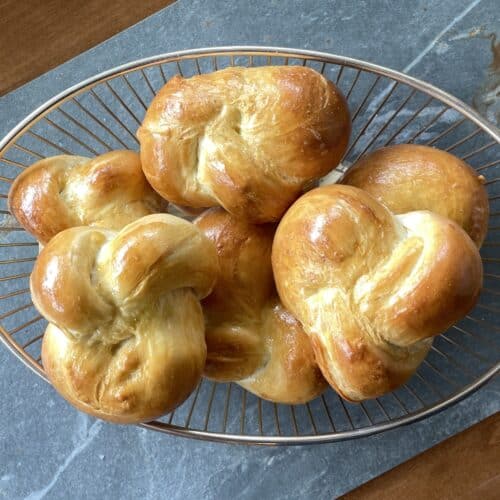
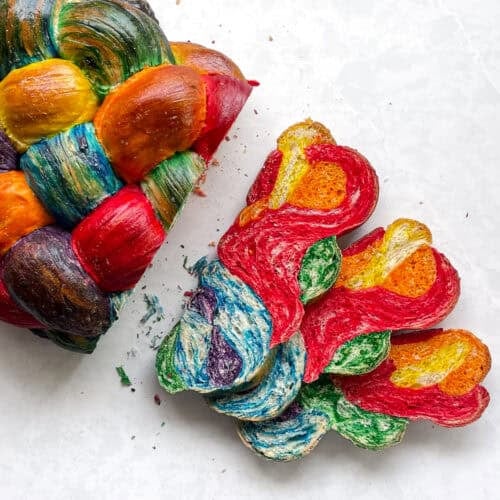
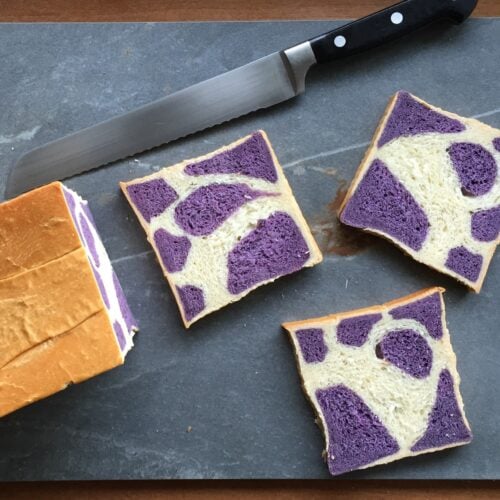




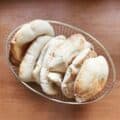

Other types of breads for sandwiches
There are some obvious choices for sandwiches not included here. I’ve made baguettes at home but have been disappointed in the taste compared to bakery baguettes. English muffins and bagels make great breakfast sandwiches. Or you can even use a waffle – these peanut butter waffles make amazing peanut butter and jelly sandwiches!
Related recipes
Check out some toppings and spreads to go on your sandwiches:
What’s next?
If you make any of these types of breads for sandwiches, please leave a comment or rating. And tag @uglyducklingbakery with your sandwiches and sandwich bread photos on Instagram!
Bored with the recipes you’ve been cooking and baking lately? Join the thousands of others who get inspiration here:



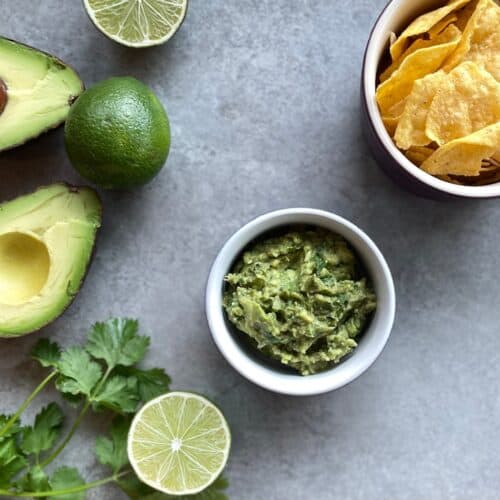


Sandwiches are my children’s favorite food; they love to take them as their lunch and snack in their school here in Pompano Beach, FL.
I like how you explain that most sandwich bread should be baked to an internal temperature of 190° to 195° Fahrenheit, or even up to 210° Fahrenheit, depending on the type of bread. They should be golden brown, with a hollow sound when lightly knocked on the bottom.
Hi Marie – thanks for the note! So many of us are struggling with what to send as school lunches. I think you and I are lucky that our kids like sandwiches. Hope you all stayed safe during Ian! Joanne